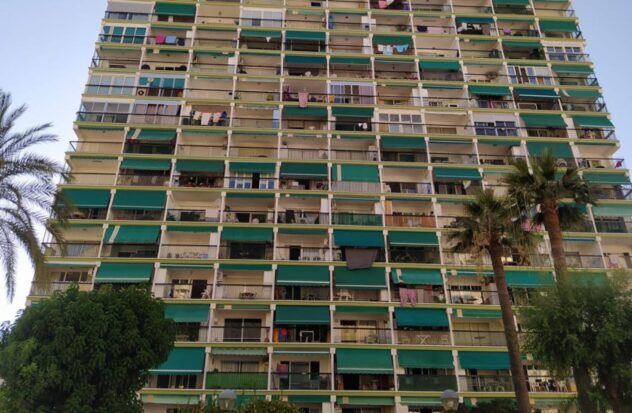If there is something that defines the exterior of the housing blocks in many of the large Spanish cities is the awning. This popular equipment helps us, on the one hand, to prevent neighbors and curious people from seeing what we do within the walls of our house and, above all, it is a barrier against the scorching rays of the sun that enter in summer.
But beyond its usefulness, What really draws attention from the outside, the following is observed: Why are they all (or almost all) green? The topic is up for debate, and there is even a Facebook group dedicated to them (Friends of the green awningwith more than 3,000 members). It was created by Pablo Arboleda, architect and researcher at the University of Glasgowwho upon returning to Spain realized that the majority had this tone, presents an article of Idealistic.
Start in the 60s
After much investigation, he attributes the tone to the era, the neighborhood communities and a fashion. Whatever it may be, Between 1960 and 1980 they began to become popular In Spain, coinciding with the massive construction of housing (400,000 per year, on average, between 1970 and 1981 according to the National Institute of Statistics) and the exodus from villages to cities.
Since its appearance in the 60s of the last century, the The green awning is the most characteristic element of Spanish architecture in recent decades.. Despite being present in buildings in every corner of the country, the green awning establishes an aesthetic pattern that, until now, has gone unnoticed by the general publicindicates the information message in the aforementioned Friends of Toldo Verde group.
Three shades available
The interest in placing this artifact could be in lower the temperature of the house a few degrees with the arrival of summer. And the color? Apparently, it was only available in green, orange and blue, the first being the most chosen. A contagion effect then began: the acquisition passed from one neighbor to another, to another… until the facade of the block was filled. In case of a break and wanting to change color, you could be accused of breaking the exterior aesthetic.
And although at first there were some with printed on the inside, finally its success did not last longleaving only the green ones completely. Arboleda defends them almost as another example of Spanish heritage. Like the air conditioning machines on the facade, the butane cylinders or exposed brick. Maybe it is a definition of tacky, I do not want to make aesthetic assessments, but I do believe that is part of the cultural heritageAnd that is precisely what the social network group is looking for: Heritage is what we are; not what we want to be.




